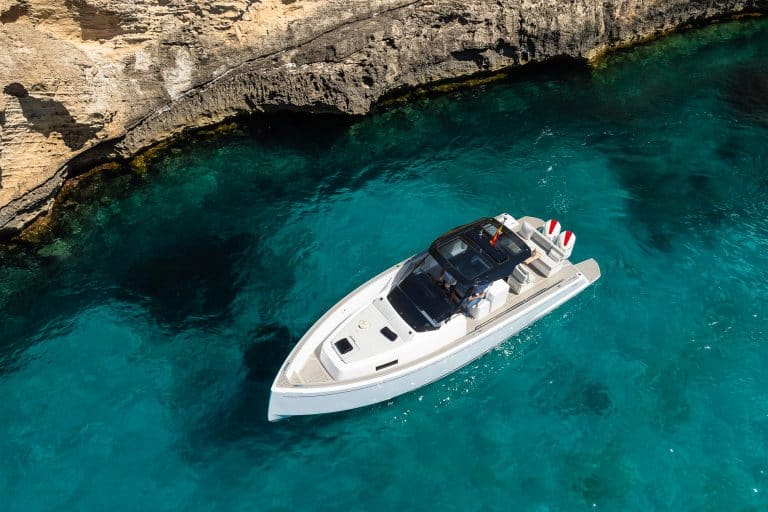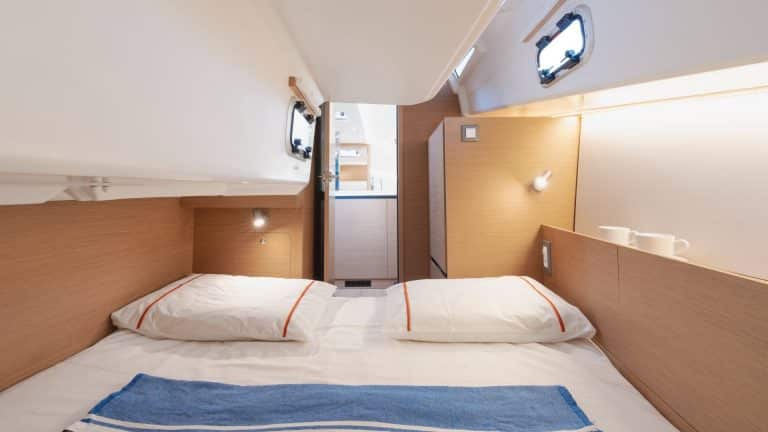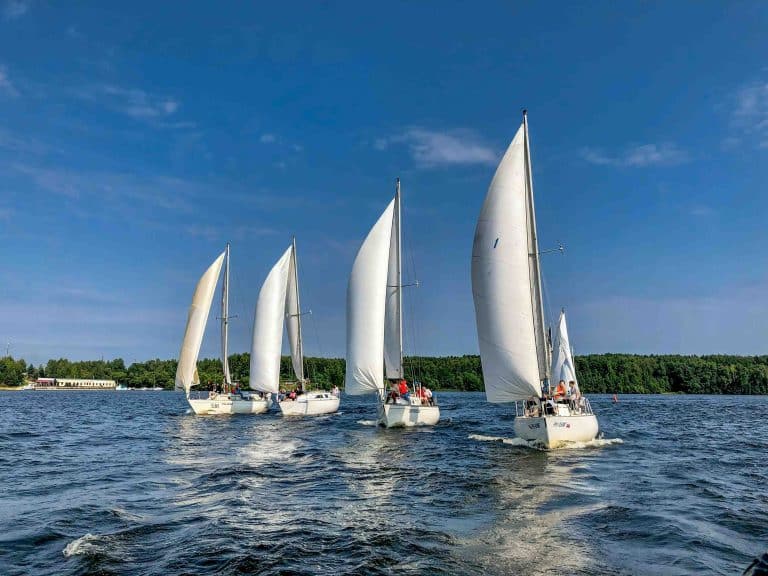The origin of speed sail
When we think of Speed Sail, the first thing that comes to mind is a sport in which the wind is used to move. Using a scooter or skate that has been incorporated with larger wheels and a sail or, more recently, a kite -or kite- or even a wing. It is usually practiced on beaches with hard sand at low tide. The original version of this sport was invented by windsurfers to “kill time” while waiting for the best wind conditions to go out to sea. It was simply a matter of attaching our rig to a skateboard and looking for an esplanade to move and progress. What windsurfer didn’t carry a skateboard in his van? This modality even served as a test bench to perform certain maneuvers in “slow motion” that would later be applied at sea.
The advance of technology in speed sailing
However, the most current answer to “what is speed sail?” is the one that justifies increasingly faster sailing with less friction of the hulls – now replaced by foils – and, as a consequence of all this, sailing basically with apparent winds, that is, with wind created from our own speed that, as it increases, also generates greater speed in a process that feeds back to the brutal limits shown in the images of sailing competitions at the highest speed. The displacement hulls gave way to semi-planing hulls and then to purely gliding hulls, which in recent times have given way to those hulls equipped with movable appendages called foils that allow us to take off and literally fly over the sea, with hardly any friction. The evolution is such that even the contenders and the defender of the America’s Cup use this navigation system applied to spectacular monohulls or large catamarans.
News
Nowadays, the answer to “What is speed sail?” takes us to the maximum emotions in sailing, undoubtedly to a way of sailing that has nothing to do with the classic one. And irremediably, to a high level of control of the concepts of navigation because sailing with foils everything is multiplied.
Historically, planing hulls, which preceded or evolved to foils, also sailed generating their own apparent wind, but this has evolved to exaggerated limits with the irruption in the competition of foils, which are also beginning to enter the world of recreational sailing, both in sailing boats and motorboats.

Aerodynamics in speed sailing
As far as aerodynamics is concerned – understanding as such the behaviour of the wind and its relationship with the boat and the sails – the concept of “what is speed sail? “is a phenomenon or situation that occurs when we gain speed as we sail, so that the apparent wind becomes more headwind and then we have to chase the sails for this more headwind – upwind – and therefore we gain even more speed and the apparent wind rises again and becomes more headwind and so on, until we generate a feedback situation of always sailing upwind and on an apparent upwind course, although it is possible that the course is not such. Speed is therefore the main key to explaining “what is speed sail?” or apparent sailing.
The role of technique
In the world of racing, a lot of boats are now being sailed with foils, boats that are constantly evolving and exploiting and developing the concept based on the question “what is speed sail?” to the maximum. This requires a very specific preparation on board as it is a very different way of sailing.
Always at maximum speed and with a really high level of demand. Both physically and mentally. It is not only about knowing how to sail in an elite team, it is also about knowing how to coordinate a team in perfect harmony and synchronisation. It is also about working together with a single goal in mind: to keep the boat in the best position.
A nose dive or forced splashdown has major consequences with a drastic decrease in speed which in practice is usually the same as a crash. Therefore, preparation and concentration will be major factors in this type of sailing to avoid catastrophic accidents.

Sensations when sailing with foils
The sensations are also maximum and, surely, the most striking thing in these circumstances is the surprising smoothness that is obtained in navigation. It would seem logical that the movements would be much more abrupt. But when the boat flies and stays in the air, there are no waves or bumps to affect the boat’s progress. You simply sail at breakneck speeds, taking advantage of the minimal friction of the foils in the water. The key is to keep the boat in position.
But without a doubt, the most spectacular thing about this type of sailing is the visual impact of seeing a boat flying over the sea. Also the speeds that the boats can reach, which are much faster than the wind.









